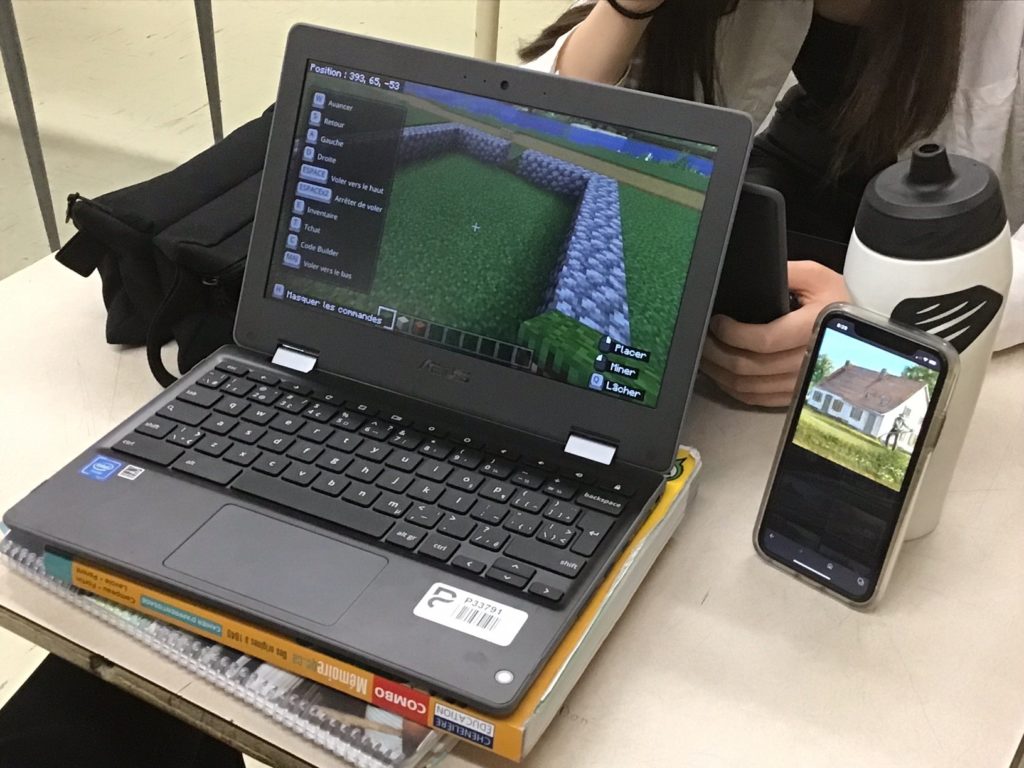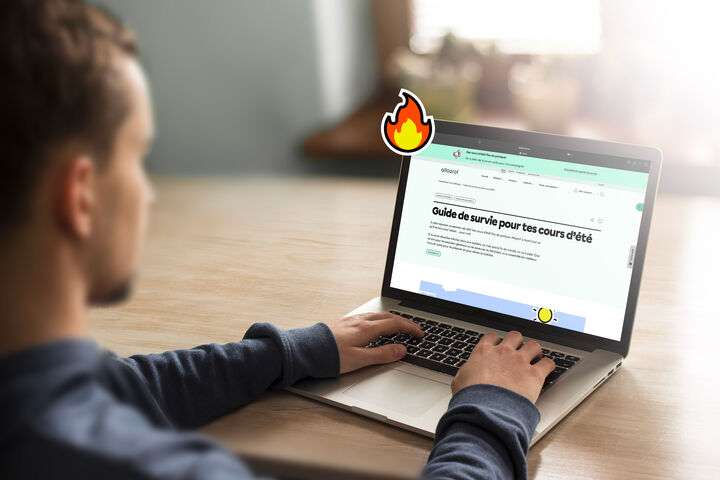L’automne dernier, Sophy James, enseignante de 3e secondaire en histoire du Québec et du Canada à l’école La Seigneurie, à Québec, a décidé d’expérimenter un nouveau projet avec ses élèves. C’est ainsi qu’une seigneurie a pris vie dans l’univers ludique de Minecraft.
Peu après la rentrée scolaire, Sophy a reçu un courriel de la part de l’équipe de conseillers pédagogiques de son centre de services scolaire qui proposait différentes activités à expérimenter en univers social. À la recherche d’un projet différent et permettant à ses élèves d’être plus actifs dans leurs apprentissages, elle a répondu positivement à la proposition.
« Je n’avais jamais fait de projet “techno”. Une collègue m’avait parlé de Minecraft l’année dernière, mais sans plus. Puis, je me suis dit que cela pourrait être intéressant de sortir de ma zone de confort, je voulais essayer quelque chose de nouveau », explique l’enseignante. Elle ajoute que l’appui qu’elle a reçu de Sylvie Perron, professionnelle à la pédagogie au secondaire, et d’Étienne Filteau, technopédagogue, l’ont rapidement mise en confiance. « Leur accompagnement m’a beaucoup sécurisé tout au long du projet. »
Pour cette première fois, elle a choisi de réaliser l’activité Le régime seigneurial avec Minecraft, proposé par le Service national du RÉCIT, domaine de l’univers social. Cette activité permet d’atteindre la compétence 1 : caractériser une période de l’histoire du Québec et du Canada. Sophy a complété l’activité avec un seul de ses sept groupes. Avec le recul, elle est convaincue que ce fût la bonne stratégie à adopter pour une première fois, afin de gagner en confiance. Néanmoins, elle n’hésitera pas à étendre le projet à l’ensemble de ses groupes l’année prochaine.
Construire une seigneurie et organiser une visite guidée
Concrètement, les élèves se sont regroupés en groupes de quatre, puis chaque groupe a choisi un bâtiment d’une seigneurie de l’époque du régime français (manoir, moulin, maison du censitaire, église) et en a réalisé la construction à l’intérieur d’un monde Minecraft.
Après une période d’introduction au projet, les élèves ont bénéficié de trois périodes pour finaliser leur construction. « Dès le début, les élèves se sont engagés. Ils se sont rapidement partagé les tâches et l’entraide était au rendez-vous. Ces périodes ont tellement passé vite! C’était léger, amusant et les élèves apprenaient », témoigne l’enseignante.

Après avoir complété la construction de leur bâtiment, les élèves devaient préparer une visite virtuelle pour leurs camarades de classe. Pour ce faire, Sophy leur a demandé d’enregistrer une visite commentée à l’aide des fonctions d’enregistrement intégrées dans les appareils Chromebook utilisés par les élèves, ou encore avec Screencastify, une application qui permet d’enregistrer ce qui se passe à l’écran tout en captant la voix. Encore une fois, il s’agissait de varier les activités d’apprentissage pour les élèves.

En vivant cette première expérience, l’enseignante a eu la preuve qu’elle n’était pas obligée de maîtriser une technologie afin de l’utiliser avec ses élèves. « Il suffit d’avoir quelques connaissances de base (connaître le vocabulaire utilisé, par exemple), puis de faire confiance aux jeunes. L’intelligence collective a fait son œuvre! », conclut-elle.

En complément : Pour découvrir Screencastify, le CTREQ propose un petit guide.
Dimension(s) de la compétence numérique en lien avec cet article
3- Exploiter le potentiel du numérique pour l’apprentissage
6- Communiquer à l’aide du numérique
7- Produire du contenu avec le numérique
Voir le Cadre de référence.







